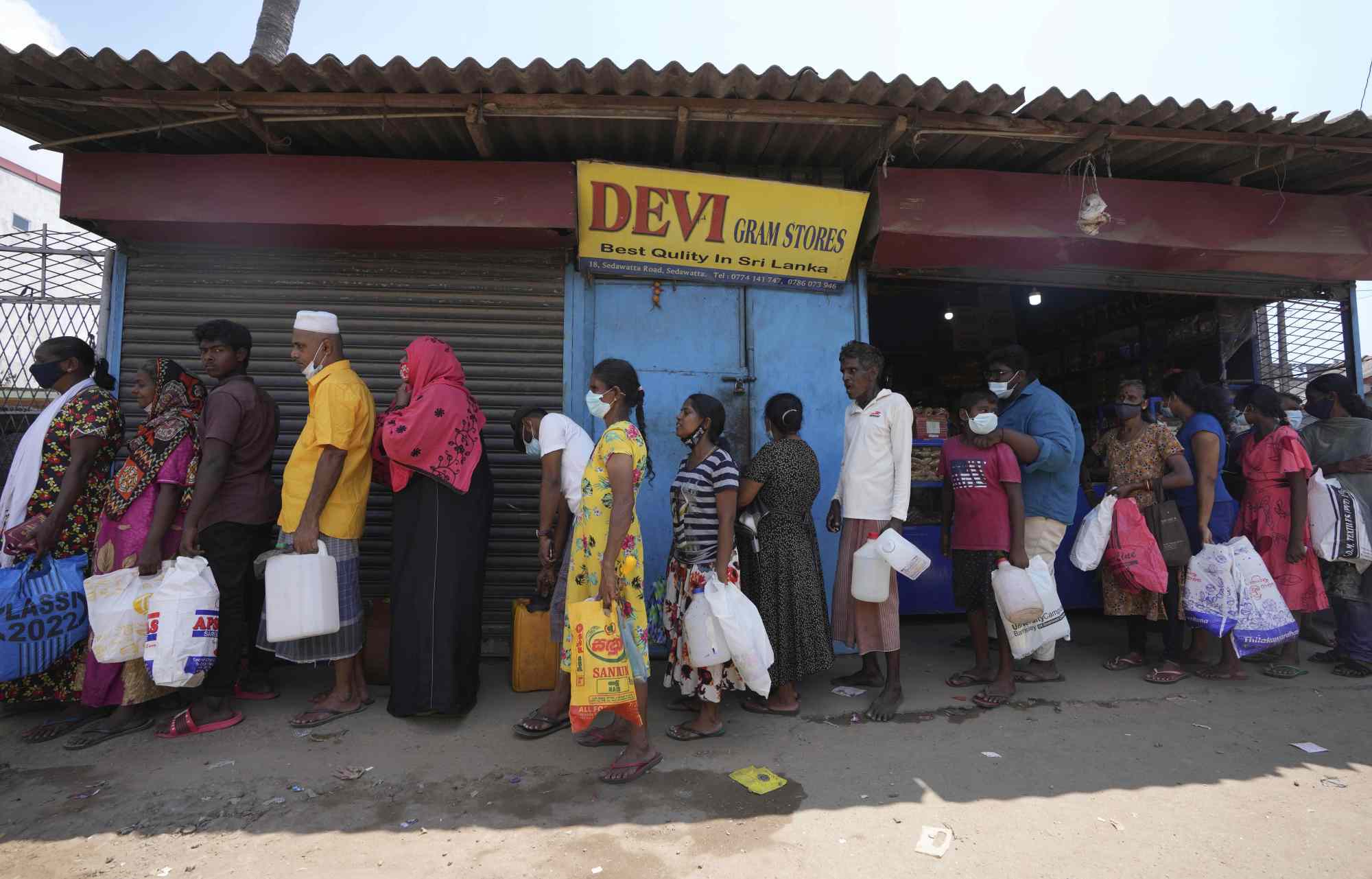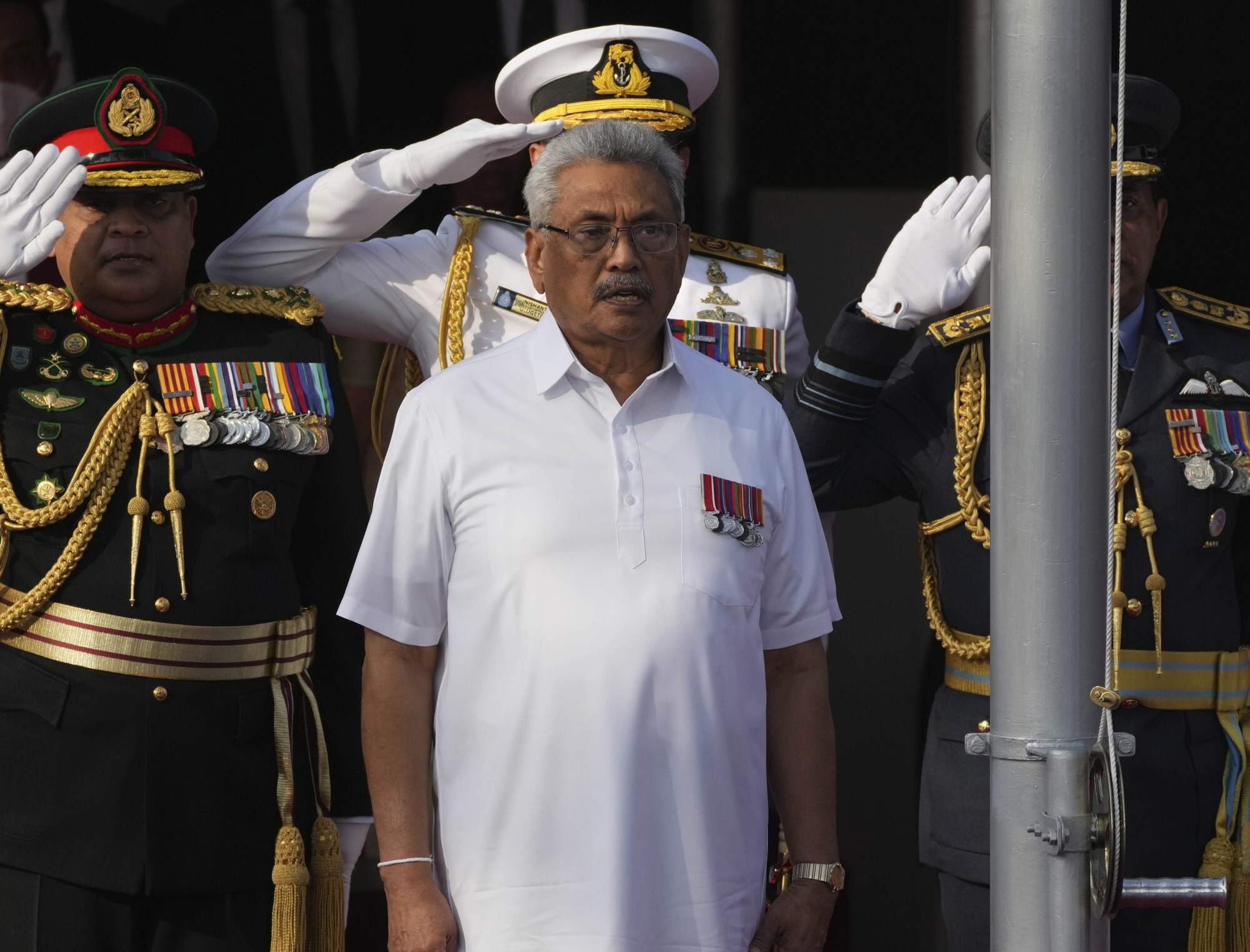
Sri Lanka prays for rain as it runs out of fossil fuels to generate power
- Hydropower can typically meet about 40 per cent of the island nation’s electricity needs, but a dry spell has caused this to drop to about 20 per cent
- Cash-strapped Sri Lanka is running out of foreign currency to pay for fuel and other imports, which has led to hours-long outages as power plants shut down
Hydropower could well be the medium-term solution to the country’s hugely inconveniencing power cuts, which lasted for as long as 13 hours by the final weeks of March.
With a population of 22 million people, the island nation’s daily electricity demand is about 4,000 gigawatt-hours per day, but the Ceylon Electricity Board (CEB) has been unable to maintain this level of output since January.

The reasons for this supply deficit are complex – ranging from a drastic reduction in hydropower generation during the dry season, to the country’s slow shift towards other forms of renewable energy. It has only been worsened by the foreign currency crisis, and high prices of oil and coal in the global markets.
Following a nationwide power outage on December 3 last year – believed to be “sabotage” on the part of CEB employees for reasons unrelated to the current crisis – Sri Lanka’s largest power plant at Norochcholai had to shut down for nearly six weeks.
This resulted in some 300 megawatt-hours of daily generating capacity being lost, a CEB source who wished to remain anonymous told This Week in Asia. “And this loss had to be substituted with hydropower. Once the hydropower capacity fell low, thermal energy generated via fuel had to fill in this gap,” the source said.
Debts, defaults
Sri Lanka announced last week it would temporarily suspend foreign debt repayments, leading on Monday to the country’s first-ever default on US$78 million of debt. Talks are ongoing with the International Monetary Fund to secure emergency financial help.
The country’s politics have also been roiled by the crisis, with street protests continuing against President Gotabaya Rajapaksa’s administration.

Meanwhile, two ships carrying 120,000 metric tons of coal were anchored off the coast near the Norochcholai power plant for six days as the country struggled to find the funds to make payment for the cargo. The central bank produced the foreign currency for the shipment on Monday night.
“Right now, the coal and diesel prices are quite high, which is a major concern because the cost of power generation goes up at the CEB end,” said Damitha Kumarasinghe, director general of the Public Utilities Commission of Sri Lanka, who said he expects pending renewable energy projects to come online soon.
Sri Lanka has three major renewable energy projects in the pipeline – a solar power plant in Siyabalanduwa, Uva province; a mixed wind and solar power plant in Pooneryn; and a wind plant in Mannar in the Northern province.
‘Weeks, if not days’: Sri Lanka on brink of catastrophic number of deaths
“Environment and social impact assessments are ongoing for the last two projects, but these are expected to be functional by next year,” said Ranjith Sepala, chairman of the Sri Lanka Sustainable Energy Authority. Jointly, the projects are expected to add about 700 MWh per day to the national grid.
Sepala said CEB was to blame for the ongoing power crisis in Sri Lanka because it had shown “zero interest” in renewable energy, while adding that the country needs to be generating an additional 1,000 MWh per day from such sources by the end of this year.
Rooftop solar – by which electricity is generated using solar panels installed on houses and factories – would offer a more immediate solution than other projects, Sepala said, as it could be rolled out more quickly, though analysts have noted that the price Sri Lanka pays for electricity generated by this method would need to be increased.
Hydro-powered
Aruna Kulatunga, an independent energy analyst from Sri Lanka, said the country was overdependent on fossil fuels and had been too slow at implementing renewable energy projects.
“We have been planning for solar and wind power for many years, the problem was in implementation,” he said. “Now we are in deep trouble unless we can generate some hydropower, because the [Norochcholai] power plant will have to be shut down quite soon since we can no longer afford the coal.”
Kumarasinghe, from the Public Utilities Commission, said hydropower can usually meet about 40 per cent of the country’s total electricity needs, but the recent dry spell meant it was only contributing about 20 per cent at present. Another 10 to 12 per cent comes from other renewable energy sources, he said – meaning Sri Lanka is currently depending on power plants fired by fossil fuels to meet close to 70 per cent of its energy needs.
If more rains come in with the monsoons... that would definitely reduce the existing power deficit
“If more rains come in with the monsoons, we should be able to increase the generation of hydropower, and that would definitely reduce the existing power deficit,” he said. “If Sri Lanka does not generate adequate hydropower by next month we will have to go for strong demand side management options,” he added, referring to the possibility of extended energy rationing.
Kulatunga remains sceptical that any of Sri Lanka’s pending renewable energy projects will get off the ground the any time ground soon – despite President Rajapaksa’s ambitious announcement two years ago that renewable energy would meet 70 per cent of the country’s energy needs by 2030.
Sri Lankan businesses left reeling by spiralling economic crisis
Tender processes have been initiated, but the CEB has not been “cooperative”, he said, adding that it still owes close to 8 billion rupees (US$24.4 million) to existing renewable power plants.
Bidders are also selected based on their “connections”, he said, rather than through a “scientific” selection process.

